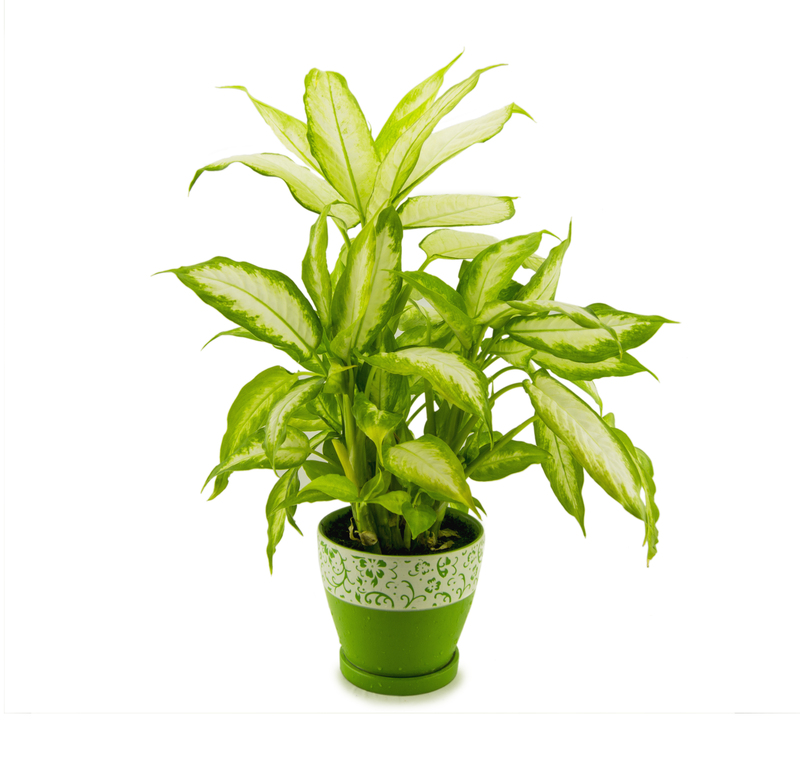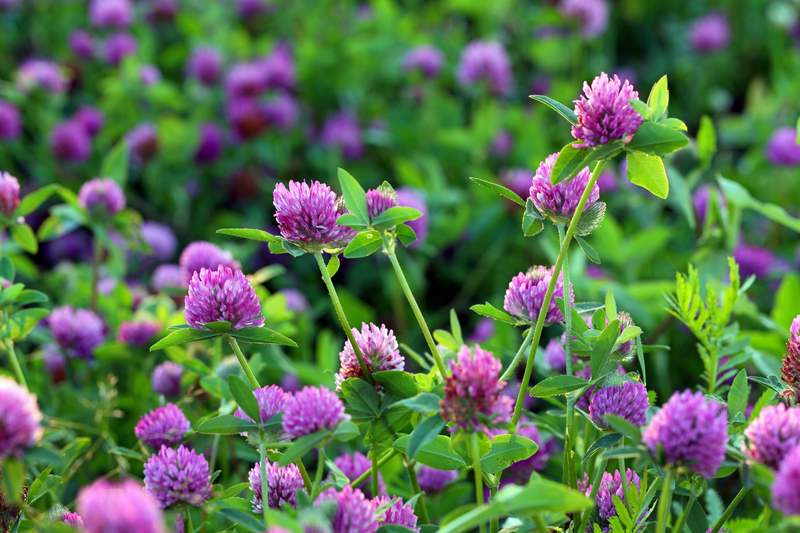Creating a Space Where Kids and Nature Meet
Posted on 29/08/2025
Creating a Space Where Kids and Nature Meet
Connecting children with the outdoors is more crucial today than ever before. In an age defined by screens and structured schedules, kids are spending increasingly less time in natural environments. As parents, educators, and community leaders, fostering a space where kids and nature meet can nurture wonder, resilience, and well-being. This comprehensive guide explores how to craft inviting, practical outdoor spaces that encourage children to explore, learn, and thrive.
Why Bring Kids and Nature Together?
The relationship between kids and nature has well-documented benefits. Not only does spending time outdoors promote physical health, but it also supports mental and emotional development. Creating a space where children and the natural world intersect is a powerful step towards fostering lifelong appreciation and stewardship of the environment.
- Improved cognitive functioning and creativity.
- Increased physical activity and motor skills development.
- Better concentration, reduced stress, and emotional resilience.
- Enhanced social skills through cooperative outdoor play.
- Attunement to weather, seasons, animals, and plants.
Adopting strategies that integrate nature experiences for children has positive, far-reaching impacts for individuals and communities alike.

Key Principles for Designing Child-Friendly Natural Spaces
Whether you have a backyard, community garden, or a school playground to develop, these principles will help in creating welcoming and enriching environments where kids and nature meet.
1. Safety First--But Don't Over-Sanitize
Balancing risk and safety is essential when connecting children with nature. Create an environment that removes significant hazards--such as poisonous plants or unsafe structures--while still allowing space for age-appropriate risk-taking and exploration. This fosters confidence and independence.
- Clearly mark boundaries.
- Regularly inspect equipment and plant life.
- Provide supervision without hovering--give space for free play.
2. Foster Sensory Engagement
Nature is inherently multi-sensory. Encourage interaction by designing areas that stimulate touch, sight, sound, smell, and taste.
- Textured paths (pebbles, grass, bark) for barefoot explorations.
- Plant fragrant flowers, edible herbs, and colorful shrubs.
- Include wind chimes, bird feeders, or water features for sound.
- Encourage garden-to-table activities to engage taste buds.
3. Use Natural and Local Materials
Where possible, build with materials that blend with the environment--wood, stones, sand, and water. These encourage imaginative play and reduce environmental impact.
- Logs and stumps for balance beams or seating.
- Sand pits for digging and creative construction.
- Native plants that thrive with local climate and soil.
4. Offer Variety and Adaptability
Different children benefit from different types of play. Introduce diverse elements that can be adapted or changed over time.
- Mazes, tunnels, and gentle hills for gross motor activity.
- Quiet corners for reading or observing wildlife.
- Water play zones with streams, ponds, or fountains.
- Gardening plots for hands-on learning and stewardship.
Design Ideas: Where Kids and Nature Meet
If you're looking for inspiration, consider these creative concepts to connect children and nature in backyards, schoolyards, or public parks:
1. Wildlife Gardens
Create a space teeming with life by planting native shrubs, wildflowers, and grasses. Add birdhouses, butterfly shelters, and log piles for insects. Teach children to observe and identify local species.
2. Sensory Trails
Design a meandering path featuring areas to touch, smell, and listen. Integrate natural materials underfoot, aromatic plantings, and wind-activated art for a full sensory journey.
3. Edible Landscapes
Growing food together is a fun, empowering way to connect with nature. Plant berry bushes, fruit trees, herbs, and vegetables. Involve children in every stage--from planting and watering to harvesting and tasting.
4. Outdoor Classrooms
Set up shaded seating circles or log benches for group discussions, storytelling, and lessons in the open air. Use these spaces for nature-based science, art, and mindfulness activities.
5. Adventure Zones
Install climbing structures, boulders, or timber balance beams. Let kids build forts or dens with branches and reclaimed fabric. Use loose parts--pinecones, stones, shells--for creative construction play.
6. Water Play Spaces
Children are naturally drawn to water. Shallow streams, rain gardens, and splash pads allow for safe, supervised play. Highlight the water cycle and conservation through interactive features.
7. Quiet Nature Nooks
For those who crave solitude, a secluded bench beneath trees or a small hideaway surrounded by tall plants offers a peaceful retreat for reflection and observation.
Tips for Parents: Growing a Nature-Rich Backyard
You don't need sprawling acreage to create a thriving backyard where kids and nature meet. Here's how to get started:
- Observe your child's play style--do they climb, dig, build, or watch?
- Start small: even a container garden or bird feeder makes a difference.
- Leave sections "untidy" for bugs and wildlife--don't over-manicure.
- Rotate toys and materials to spark renewed interest.
- Invite friends and neighbors for group activities.
Low-Cost Additions for Any Backyard
- DIY mud kitchens with old pots and reclaimed wood.
- Stacked stones for balancing and building.
- Butterfly puddling station--a shallow dish of moist sand or soil.
- Chalkboards or easels for outdoor creativity.
- Birdbaths and pollinator-friendly flowers for wildlife observation.
The Role of Community Spaces and Schools
Beyond individual backyards, public parks, community gardens, and schoolyards can champion access to nature for children. Partnerships between PTA groups, local government, and environmental organizations can transform underused urban spaces into green play havens.
Elements to Advocate for in Public Spaces
- Inclusive design for all ages and abilities.
- Shade trees, water fountains, and seating.
- Interactivity (e.g., musical instruments, movable logs).
- Educational signage about local plants, animals, and ecosystems.
- Regular maintenance for safety and cleanliness.
Examples of Community Nature Spaces:
- Nature play parks with wild areas, climbing trees, and wildlife ponds.
- School rain gardens managed by students for hands-on science learning.
- Rooftop or vertical gardens in urban centers.
Educational Benefits: Learning Outside the Classroom
Numerous studies highlight the educational benefits of creating spaces where kids and nature meet. Outdoor learning fosters experimentation, resilience, and systems thinking. Children learn about ecosystems, weather patterns, plant growth, and animal behavior first-hand, not just from books.
Nature-Based Learning Activities
- Bug hunts and tree identification hikes.
- Solar printing and nature-inspired arts and crafts.
- Weather journals and cloud charting.
- Seed planting and ecological restoration projects.
- Wildlife observation with binoculars or magnifying glasses.
When kids interact with nature-rich environments, learning becomes tangible, memorable, and delightful.
Overcoming Barriers: Making Nature Accessible to All Kids
Not all families have access to yards, parks, or green spaces. To truly create equitable opportunities where children and nature meet, consider these solutions:
- Advocate for public school curricula to include regular outdoor time.
- Support local park expansion and maintenance initiatives.
- Encourage balconies and rooftops to host container gardens and feeders.
- Foster "nature swaps"--borrowing or sharing outdoor tools and gear.
- Utilize window boxes or indoor plant corners when outdoor space is limited.
Inclusivity means not only physical access, but also cultural relevance and community input on what forms of nature-connection matter most locally.

Nature Meets Kids: Nurturing Stewardship for the Future
Cultivating a love for nature during childhood ripples into lifelong environmental stewardship. Kids who play, learn, and unwind outdoors are more likely to protect and cherish ecosystems as adults. By actively creating spaces where children meet nature, we equip them with curiosity, empathy, and resilience.
Simple Ways to Get Started Today
- Take a walk together and notice three new things about your neighborhood's natural life.
- Plant a seed or start a mini-compost experiment on your windowsill.
- Join or volunteer with local conservation or community gardening groups.
- Host a nature scavenger hunt with neighborhood families or classmates.
Conclusion: Making Natural Connections a Family Priority
Creating a space where kids and nature meet is a gift to every child and every community.
From humble backyards to expansive parks and innovative school gardens, weaving nature into kids' daily experiences doesn't require perfection--just imagination, intention, and a willingness to get started. The rewards: healthier, happier, and more engaged children ready to care for our planet's shared future.
Are you ready to nurture wonder where kids and nature connect? Start today and watch both your child and your local ecosystem grow.

